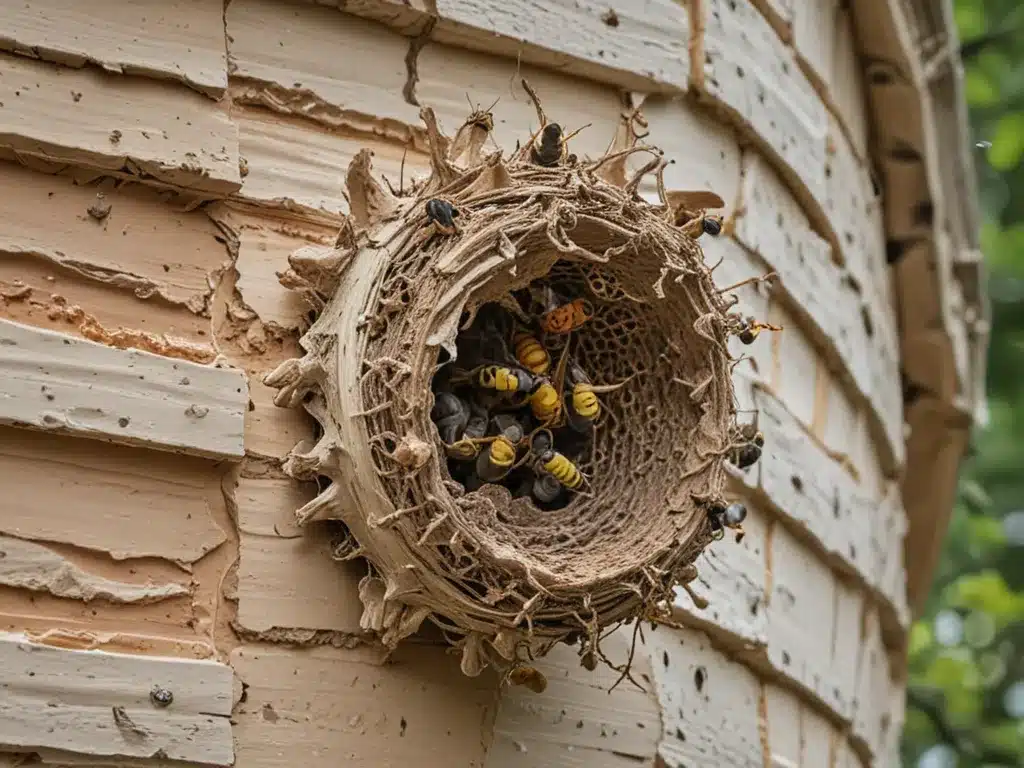Introduction
Having bird or wasp nests on your property can be a nuisance. As a homeowner, I often get asked how to properly remove these nests while minimizing risk to myself and the environment. In this article, I will provide a comprehensive guide on safely removing nests from birds and wasps.
Locating Nests
The first step is identifying where the nests are located. For bird nests, common areas include:
- Gutters
- Chimneys
- Roof peaks
- Trees
- Shrubs
- Ledges
- Crawl spaces
Wasp nests tend to be in these general locations:
- Under eaves
- In holes in walls
- Under decks
- In sheds
- In bushes
- In gutters
I inspect the exterior of the house thoroughly, looking in every nook and cranny where a nest could be hidden. Binoculars come in handy for checking high areas like roofs and trees. Going into attics and crawl spaces may be necessary to find indoor nesting sites.
Timing of Removal
When removing nests, timing is critical.
For bird nests, it’s best to wait until the young have fledged and left the nest. Removing nests with eggs or babies still in them destroys the nesting efforts and may be illegal depending on the species. I wait until the nest is empty before taking it down.
With wasps, the best time is in early spring before the queen starts laying eggs or in late fall when the colony is dying off. During peak summer months, wasp nests are very active and aggressive. I avoid disturbing them then.
Safety Precautions
When dealing with stinging insects and wildlife, safety should be the number one concern:
- Wear protective clothing like long sleeves, pants, gloves, and eye protection.
- Have an epinephrine pen on hand if you have allergies.
- Use caution on ladders, roofs, and in trees.
- Work at night when wasps are less active.
- Move slowly and avoid sudden motions.
- Have an escape plan if attacked by wasps.
- Consider hiring a professional if nests are in dangerous areas.
I never rush into removing a nest without taking proper safety steps first.
Removal Methods
There are several techniques for dismantling bird and wasp nests:
For Bird Nests
- Use a brush attachment on an extension pole to knock nests down from high areas.
- Seal entrance holes in structures with caulk or wire mesh after removal to prevent rebuilding.
- Prune back branches or trim shrubs to eliminate nesting sites.
- Place plastic replicas of predators like owls or snakes nearby to deter nesting.
For Wasp Nests
- Spray pesticide directly into the nest entrance at night, then knock down the nest after wasps die.
- Use a shop vac to suck up wasps from smaller nests.
- Suit up and carefully knock down nests by hand at night.
- Remove nests after early fall frosts when wasps are sluggish.
I always start with the least invasive method and move to stronger options as needed.
Proper Disposal
Once nests have been removed, proper disposal is important:
- Dead wasps and large nest debris should be sealed in plastic bags and thrown away immediately.
- Check for and destroy any honeycomb left from beehives to prevent attracting other insects.
- Double bag any materials with parasites like fleas or mites and dispose of carefully.
- Use gloves when handling nest debris and wash hands afterwards.
- Cleaning the area with soap and water removes pheromones that could attract new nest builders.
Following removal, I monitor sites closely for any pest reoccurrence and retreat as needed.
When to Call a Professional
Although do-it-yourself removal is possible in many cases, it’s best to call a professional exterminator for:
- Large established nests, especially of stinging insects.
- Nests in hazardous locations like on roofs.
- If you are allergic to stings.
- If nests return repeatedly.
- Removal of endangered bird nests.
Here are signs it’s time to hire a pro:
- You lack proper safety equipment.
- The nest is in a difficult to reach area.
- There are hundreds or thousands of wasps.
- You don’t know what species built the nest.
Professionals have specialized tools, protective gear, and experience to remove nests safely.
Prevention of New Nests
To help keep unwanted nests from coming back:
- Seal openings in exterior walls, roofs, and overhangs with caulk.
- Install quarter inch wire mesh over vents, chimneys, and other access points.
- Prune back tree branches and shrubs near the structure.
- Use plastic or wooden replicas of predators to scare off birds.
- Apply pesticides around the perimeter in spring and fall.
- Hire a pest control company to do preventative treatments.
With some diligence, nesting by nuisance birds and wasps can be prevented humanely and effectively.
Conclusion
Removing nests on a property is often necessary but should be done carefully and at the right time of year. The keys are using proper safety precautions, choosing effective yet gentle removal methods, sealing up entry points, and monitoring for reoccurrence. With patience and care, bird and wasp nests can be eliminated without harming people or wildlife populations. For large or challenging nests, hiring a wildlife removal professional is the safest solution.







